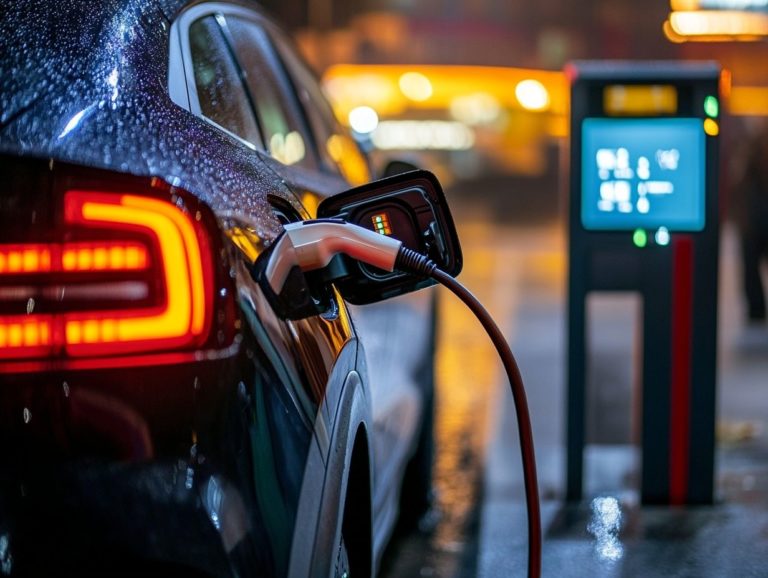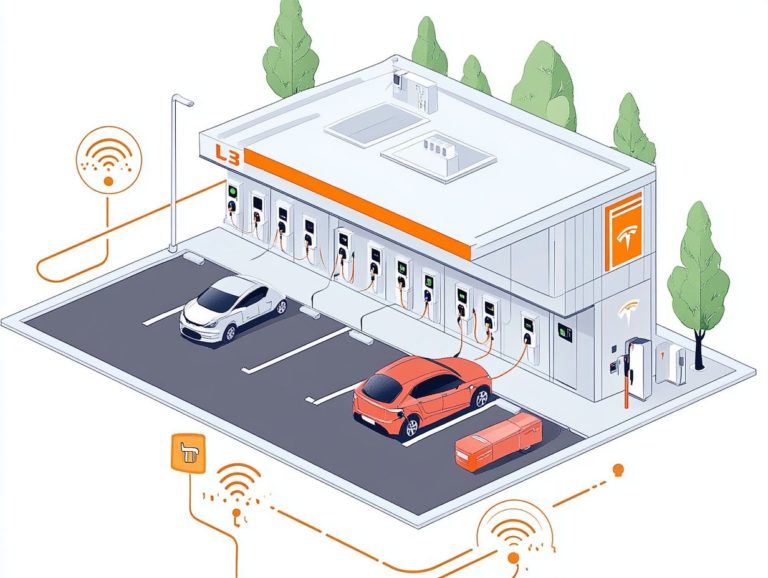Can I Use a Regular Outlet to Charge My EV?
Charging your electric vehicle (EV) is a simpler process than it may seem, but understanding the various charging options available can truly elevate your experience.
From standard wall outlets to specialized charging stations; each choice presents its unique capabilities and limitations.
In this article, you’ll delve into the different charging methods, evaluate the practicality of using a regular outlet, examine potential risks, and uncover essential safety precautions while charging your EV.
Whether you re just starting your journey with EVs or aiming to optimize your charging routine, get ready to dive into an exciting world of charging options!
Contents
- Key Takeaways:
- Overview of Different Charging Options
- Understanding Electric Vehicle Outlets
- Using a Regular Outlet to Charge an EV
- Potential Risks and Limitations
- Alternatives to Using a Regular Outlet
- Other Charging Options for EVs
- Safety Considerations for EV Charging
- Precautions to Take When Charging an EV
- Frequently Asked Questions
- Can I Use a Regular Outlet to Charge My EV?
- What type of EV can be charged with a regular outlet?
- Will using a regular outlet to charge my EV damage the outlet?
- How long will it take to fully charge my EV with a regular outlet?
- Are there any safety concerns when using a regular outlet to charge my EV?
- Can I use an extension cord with a regular outlet to charge my EV?
Key Takeaways:
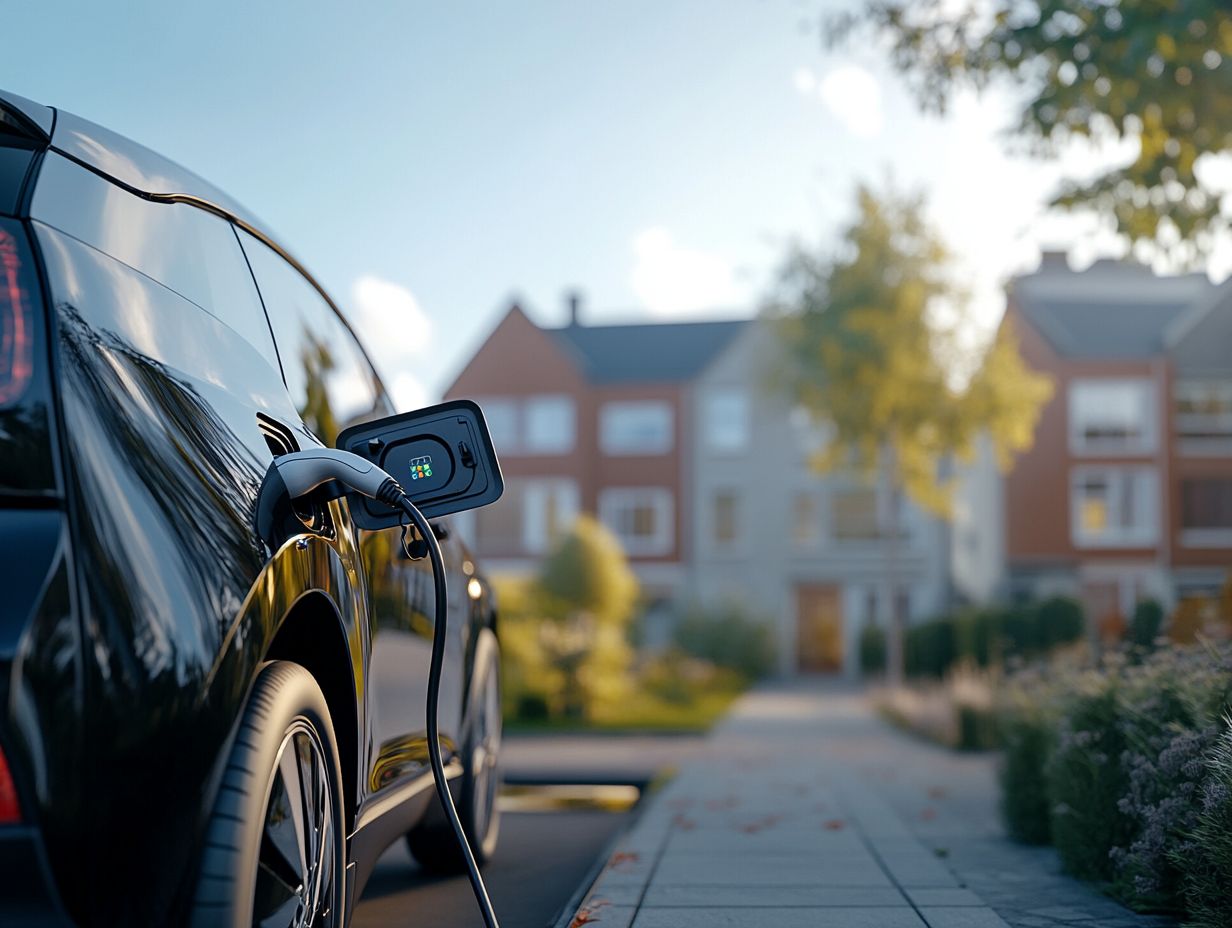
- Not all outlets are suitable for charging electric vehicles. Regular outlets may not provide enough power for efficient charging and can pose potential safety risks.
- Using a regular outlet to charge an EV should only be a temporary solution. Investing in a dedicated charging station is a smart move for faster, safer charging.
- Be mindful of safety precautions when charging your EV. Properly maintain and inspect outlets, cords, and connections to avoid accidents and damage to your vehicle.
Overview of Different Charging Options
As the electric vehicle movement accelerates, you might explore various charging options for your electric car. This includes home charging solutions and public charging stations. Understanding these options is vital for speeding up your charging while saving money, especially with fluctuating electricity prices and enticing federal incentives making the switch to electric vehicles increasingly attractive.
From Level 1 chargers that simply plug into a standard outlet to more robust Level 2 charging systems that necessitate a dedicated 240-volt outlet, each method presents distinct advantages and considerations designed to suit your unique needs and circumstances.
Understanding Electric Vehicle Outlets
Understanding the nuances of electric vehicle outlets is crucial for anyone aiming to charge their electric car efficiently. You’ll encounter various charging stations, from Level 1 chargers, which use standard household outlets, to Level 2 chargers, specifically engineered for quicker charging. Each type significantly impacts the ease and effectiveness of charging your electric vehicle, enhancing your overall experience on the road.
Types of Outlets and Their Capabilities
You have a variety of options when it comes to charging electric vehicles, each with its own unique capabilities that can influence both speed and convenience. Level 1 chargers primarily use standard household outlets, while Level 2 chargers require dedicated 240-volt outlets, delivering a much faster charging experience.
For most users, a Level 1 charger offers a simple solution: plug in your vehicle overnight and wake up to a fully charged battery. While the charging speed may be relatively slow providing about 4-5 miles of range per hour it s hassle-free for those with a less demanding routine.
Conversely, Level 2 chargers can provide 10 to 60 miles of range per hour. This makes them perfect for anyone needing a quick boost during the day or for those who frequently embark on longer journeys.
Choosing the right outlet can greatly enhance your overall user experience. Level 1 is convenient for occasional drivers or those with short commutes, while Level 2 is tailored for frequent travelers or anyone who values a swift and efficient charging solution.
Using a Regular Outlet to Charge an EV
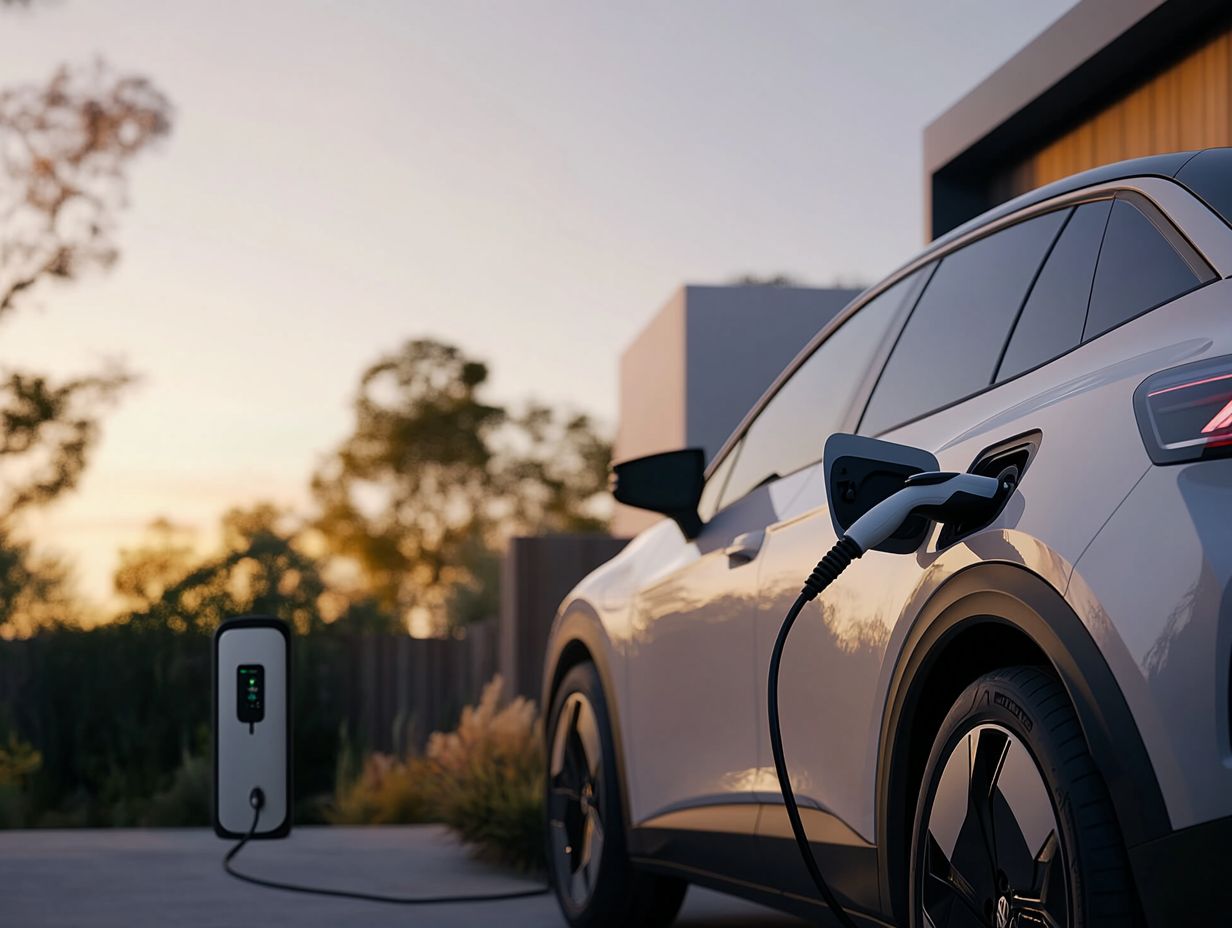
Charging your electric vehicle with a regular outlet presents a convenient and accessible solution, especially for those without immediate access to dedicated charging stations. A Level 1 charger connects effortlessly to standard household outlets, allowing you to charge overnight or during extended home stays.
While this method generally offers slower charging speeds compared to Level 2 options, it can be a practical choice. In a city like Cincinnati, where electricity prices fluctuate and charging infrastructure varies, this approach allows you to navigate your charging decisions thoughtfully.
Potential Risks and Limitations
Charging your electric vehicle with a regular outlet may seem convenient, but it comes with some potential risks and limitations you should keep in mind. The slower charging speed of Level 1 chargers connected to standard outlets might not meet your needs, especially if you have higher daily mileage or limited time to recharge.
Using regular outlets for extended periods can increase the risk of overheating electrical systems, raising safety concerns for both your vehicle and your home. These slower rates can lead to longer wait times between uses, which can be particularly inconvenient if you rely on your vehicle for daily commuting or running errands.
To enhance your ownership experience, consider upgrading to a Level 2 charger. This significant improvement in charging speed will not only save you time but also reduce strain on your household electrical systems. Regular maintenance of your outlet and circuit can further mitigate potential hazards, ensuring a safer and more efficient charging process for you.
Alternatives to Using a Regular Outlet
For electric vehicle owners like yourself who are in pursuit of more efficient charging solutions, consider exploring alternatives to a standard outlet. Level 2 charging stations and public charging options can greatly enhance your charging experience.
With Level 2 chargers, you ll enjoy significantly faster charging speeds, making them perfect for those moments when you need a quick turnaround. Meanwhile, public charging stations offer the added convenience you need for on-the-go charging, ensuring that you re always ready to hit the road with confidence.
Other Charging Options for EVs
In addition to Level 1 and Level 2 chargers, you can explore other charging options like DC Fast Charging. These powerful stations can supercharge your charging time, making them a compelling choice for those moments when you need to power up quickly while on the road.
DC Fast Charging often simply called fast charging can replenish your battery up to 80% in as little as 30 minutes. This is truly a game-changer for long road trips or when you re juggling a busy schedule. Unlike traditional chargers that may take several hours, these stations offer a swift boost, enabling you to get back on your journey with minimal downtime.
As more fast charging stations are integrated into the existing infrastructure, they enhance conventional charging options, catering to both urban drivers and those venturing on longer distances. By accommodating various driving habits, it becomes easier for you to select the best charging solution that aligns perfectly with your needs.
Safety Considerations for EV Charging
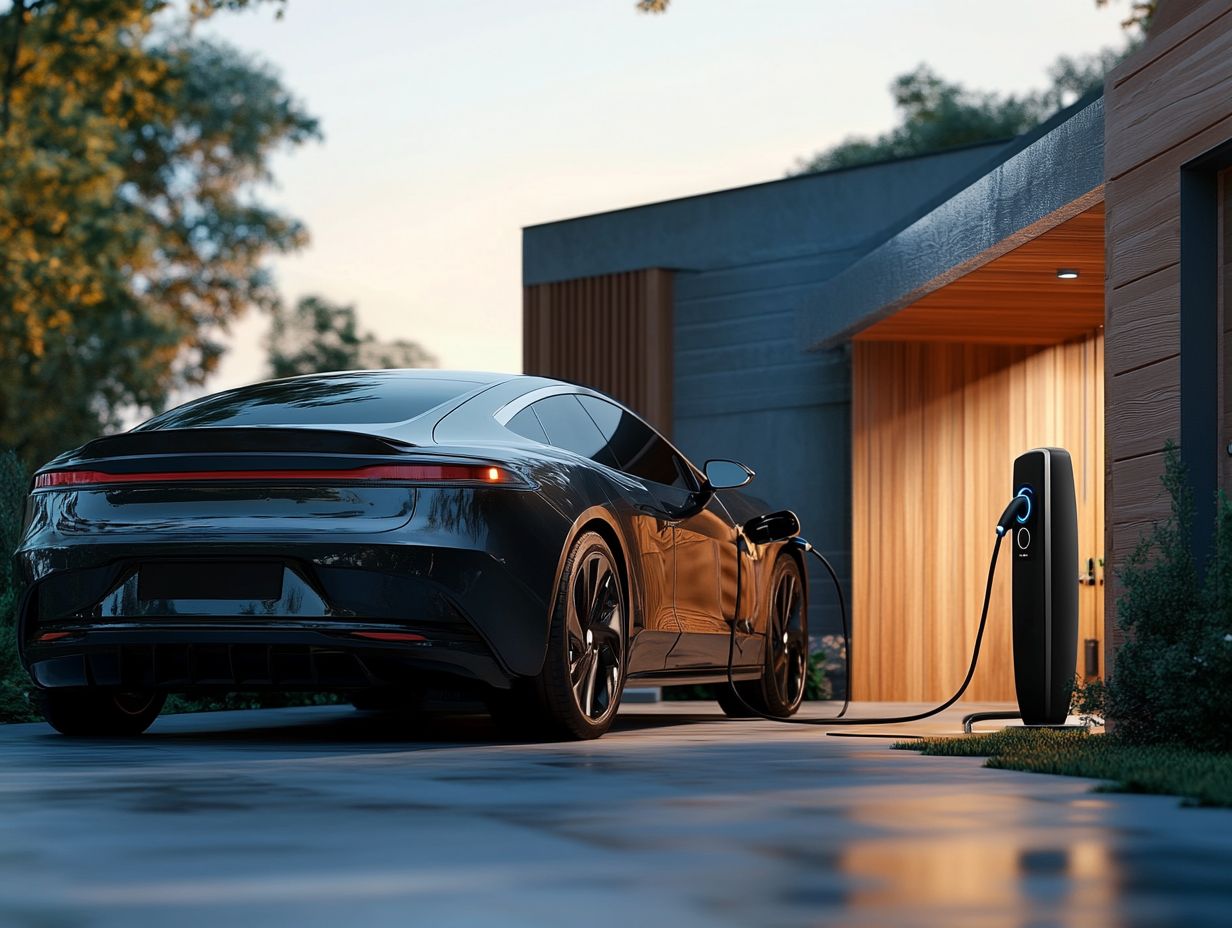
Safety considerations should be your top priority when charging electric vehicles, whether you’re utilizing home charging equipment or opting for public charging stations.
By ensuring that all charging equipment is properly installed and meticulously maintained, you can significantly reduce the risk of accidents and enjoy a reliable charging experience that enhances your electric vehicle ownership.
Precautions to Take When Charging an EV
Taking the right precautions when charging your electric vehicle is crucial for ensuring both safety and efficiency. Regularly inspecting your charging equipment for signs of wear or damage, and ensuring that proper connections are made, can significantly reduce risks during the charging process.
Familiarize yourself with the various types of charging stations available, whether they’re public locations or your own home. It s essential to use compatible chargers and cables specifically designed for your electric vehicle, as mismatches can lead to overheating or electrical faults.
Conducting routine checks on both your charging equipment and the electrical outlets can further safeguard your vehicle and enhance your peace of mind. Following safety protocols, such as keeping charging areas clear and dry, helps avoid accidents and guarantees a more efficient charging experience.
Frequently Asked Questions
Can I Use a Regular Outlet to Charge My EV?
It depends on the type of EV you have and the outlet you are using. Some EVs can be charged with a standard 120V outlet, but it may take longer to fully charge the vehicle.
What type of EV can be charged with a regular outlet?
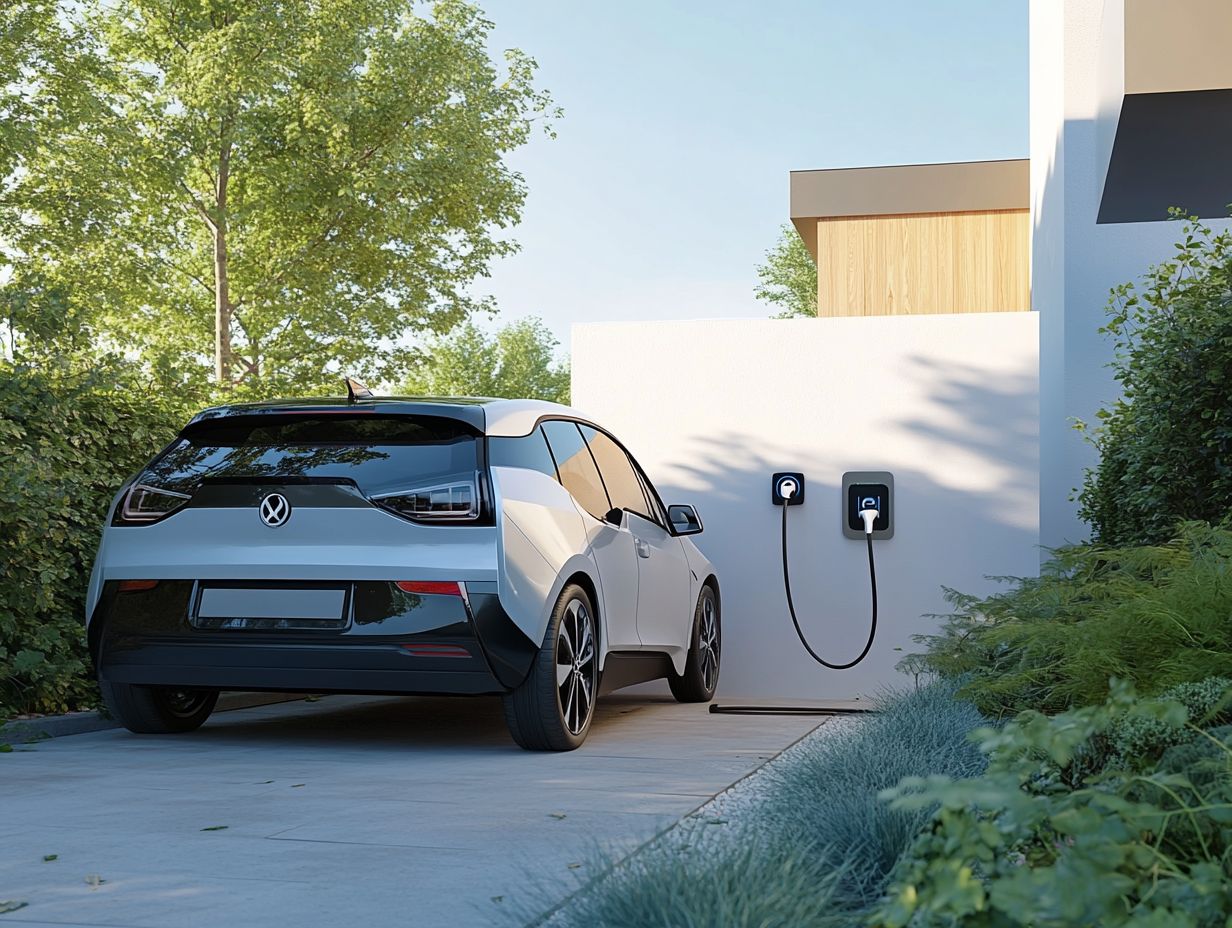
Most plug-in hybrid EVs can use a standard 120V outlet. Always check with your EV’s manufacturer for compatibility.
Will using a regular outlet to charge my EV damage the outlet?
Using a standard 120V outlet typically won’t damage it. However, for long-term use, it’s advisable to explore how to charge an electric vehicle by considering the installation of a dedicated EV charging station.
How long will it take to fully charge my EV with a regular outlet?
The charging time varies by EV type and outlet voltage. Generally, expect a full charge to take between 8 to 20 hours with a standard 120V outlet.
Are there any safety concerns when using a regular outlet to charge my EV?
Always follow the manufacturer s guidelines when charging. Ensure the outlet isn t overloaded and check for hazards before plugging in.
Can I use an extension cord with a regular outlet to charge my EV?
It s not safe to use an extension cord with a standard 120V outlet for charging. This can cause overheating and may damage both the outlet and your EV.


